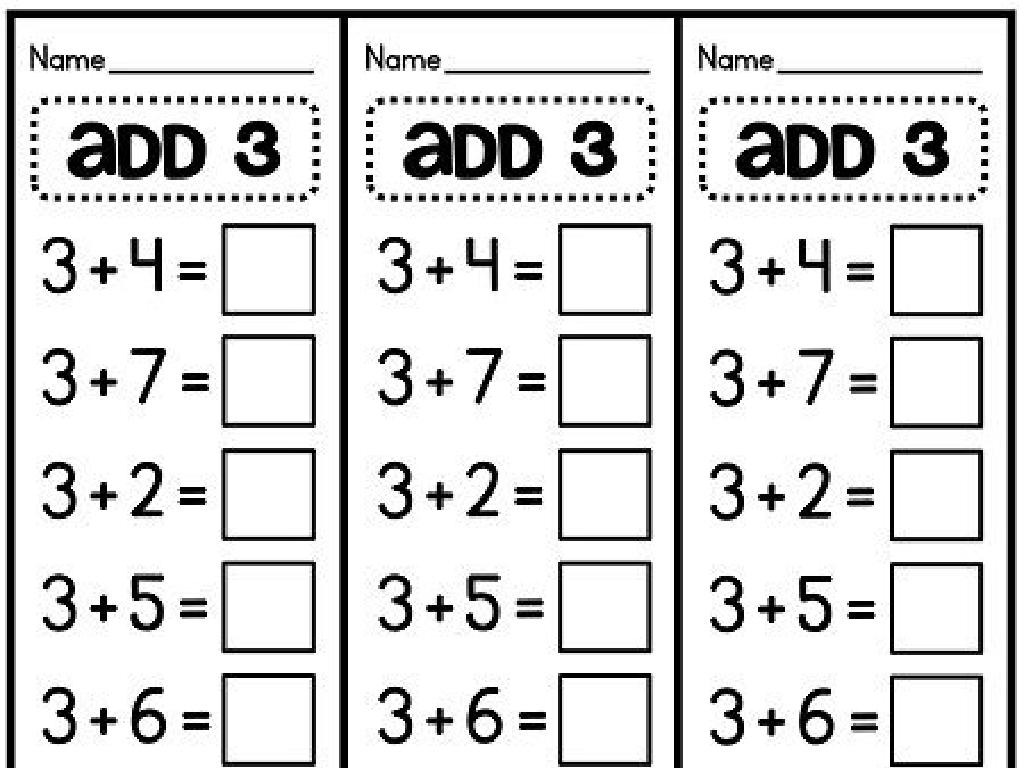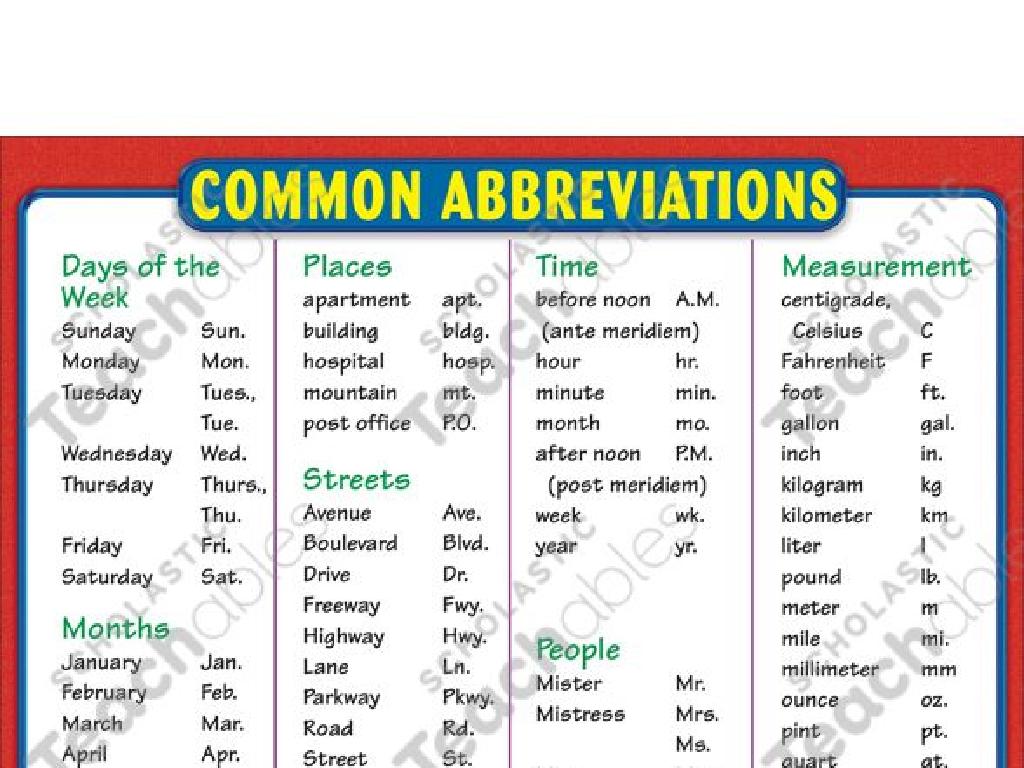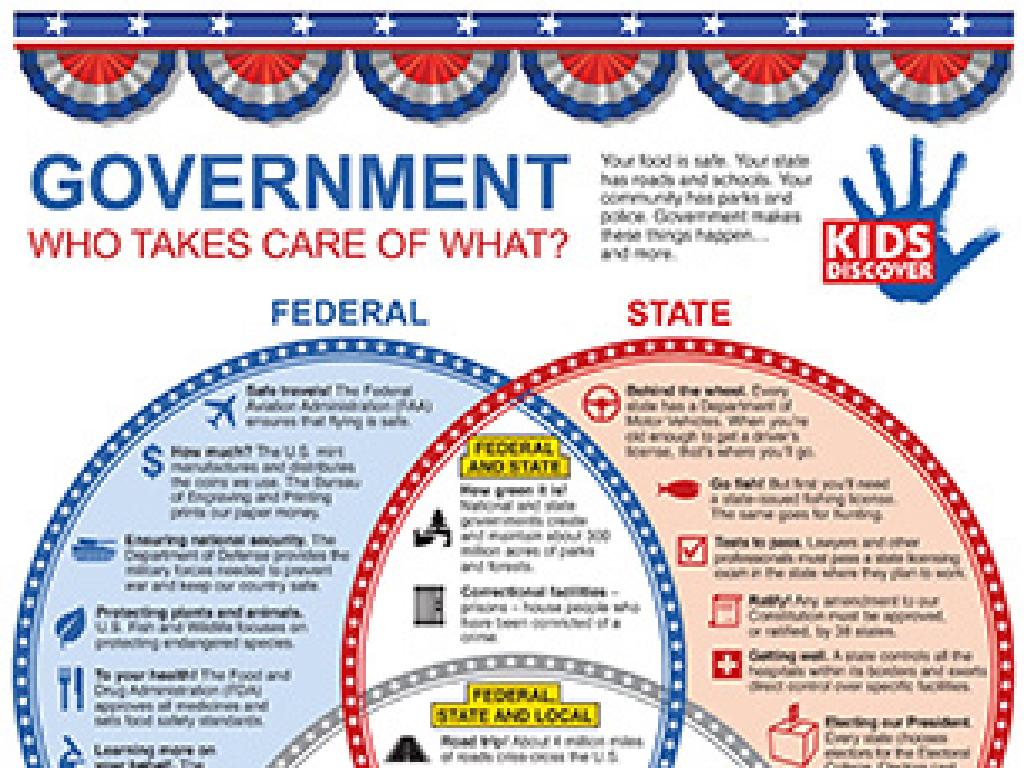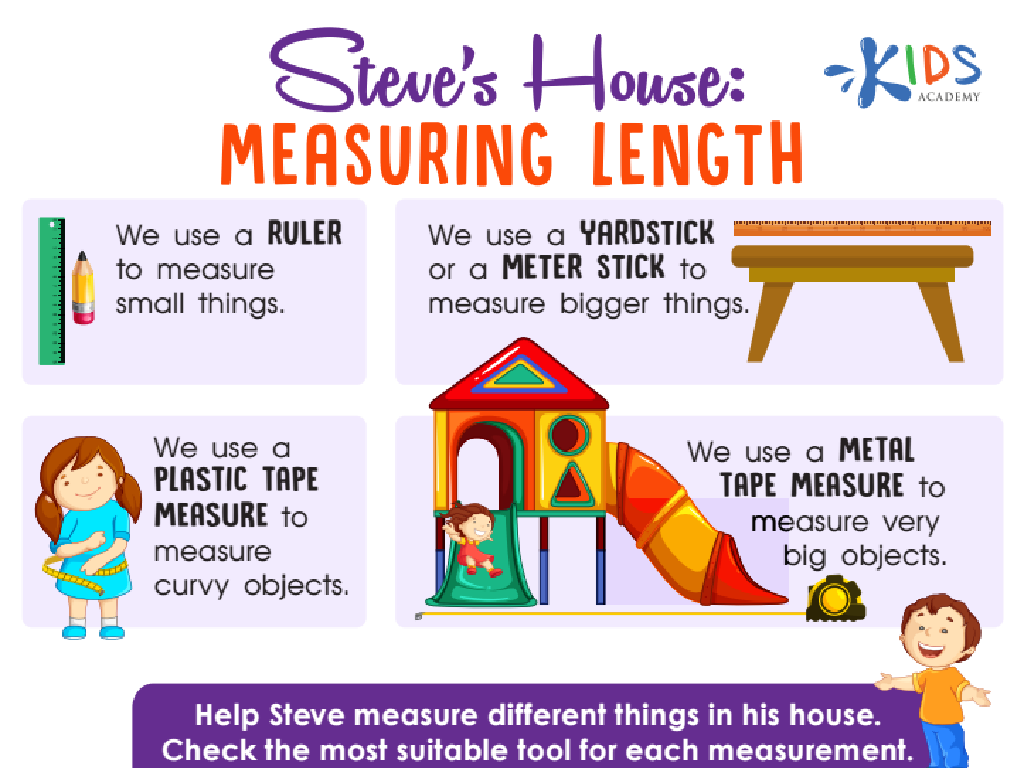Sequences: Mixed Review
Subject: Math
Grade: Eighth grade
Topic: Sequences
Please LOG IN to download the presentation. Access is available to registered users only.
View More Content
Welcome to Sequences: Recognizing Patterns
– Understanding sequence patterns
– A sequence is an ordered list of numbers following a specific pattern.
– Significance of sequences in math
– Sequences help solve problems and predict future events.
– Real-life applications of sequences
– Used in daily life, like in music rhythms or bus schedules.
– Today’s focus: Mixed Sequence Review
– We’ll revisit different types of sequences and practice identifying them.
|
This slide introduces the concept of sequences, emphasizing their importance in both mathematical theory and practical applications. Start by explaining what a sequence is and how to identify the pattern it follows. Discuss how sequences are foundational in various areas of mathematics, such as series and functions, and highlight their utility in real-world scenarios, such as planning and forecasting. The mixed review will cover arithmetic, geometric, and other types of sequences, providing students with a comprehensive understanding and the ability to recognize and apply sequences in various contexts. Encourage students to think of sequences they encounter in their daily lives to make the concept more relatable.
Understanding Sequences in Math
– Define a mathematical sequence
– An ordered list of numbers following a specific rule
– Explore simple sequence examples
– E.g., 2, 4, 6, 8 (adding 2) or 5, 10, 15, 20 (multiplying by 5)
– Identify sequence patterns
– Look for the rule that creates the sequence from one term to the next
– Practice with sequence exercises
|
This slide introduces the concept of sequences in mathematics, which is a fundamental topic in the eighth-grade curriculum. Begin by defining a sequence as an ordered list of numbers where each number is related to the previous one through a consistent mathematical rule. Provide simple examples of sequences, such as arithmetic sequences where the same number is added to get to the next term, or geometric sequences where each term is multiplied by a fixed number. Teach students how to identify the pattern that defines the sequence, which is crucial for understanding more complex mathematical concepts. Include practice exercises where students can apply their knowledge to identify patterns and create their own sequences. This will help solidify their understanding and prepare them for more advanced topics in algebra.
Exploring Types of Sequences
– Arithmetic sequences: constant addition
– Each term increases by a fixed number, e.g., 2, 4, 6, 8, …
– Geometric sequences: constant multiplication
– Each term is multiplied by a fixed number, e.g., 3, 9, 27, 81, …
– Other sequences: Fibonacci, Triangular numbers
– Fibonacci: each term is the sum of the two preceding ones. Triangular numbers: the sum of the n natural numbers.
– Recognizing sequence patterns
|
This slide introduces students to the concept of sequences in mathematics, focusing on the patterns that define different types. Arithmetic sequences are characterized by the addition of a constant number to each term to get the next term. Geometric sequences involve multiplying each term by a constant to get the next term. Other notable sequences include the Fibonacci sequence, where each term is the sum of the two preceding terms, and triangular numbers, which are the sum of the natural numbers up to a certain point. Encourage students to practice by identifying the pattern in given sequences and determining which type they belong to. Provide examples and ask students to create their own sequences following these patterns.
Sequences: Finding the Next Terms
– Use patterns to predict terms
– Identify the rule governing the sequence to predict future terms.
– Practice: Next three terms
– Find the next three terms in given sequences as a class activity.
– Discuss answer certainty
– How can we verify the terms we’ve predicted are correct?
– Reinforce sequence concepts
– Apply learned methods to ensure understanding and accuracy.
|
This slide is focused on teaching students how to use the pattern of a given sequence to predict future terms. Start by explaining how to identify the rule of a sequence, whether it’s arithmetic, geometric, or another form. Then, engage the class with a practice activity where they find the next three terms of various sequences. After the practice, initiate a discussion on methods to verify the correctness of their answers, such as checking the consistency of differences or ratios. Finally, reinforce the concepts by applying these methods to different sequences to ensure students have a solid understanding of sequence patterns and prediction.
Representing Sequences Algebraically
– Write algebraic expressions
– Translate sequences into algebraic language, like 2n or n+3.
– Understand the ‘n-th term’
– ‘n-th term’ refers to the position of a term in a sequence.
– Sequence expression examples
– For example, the n-th term of 2, 4, 6, 8 is 2n.
– Practice with sequence formulas
– Apply formulas to find specific terms in sequences.
|
This slide introduces students to the concept of representing sequences using algebraic expressions. Emphasize the importance of understanding the ‘n-th term’, which is a way to refer to any term’s position in a sequence. Provide clear examples to show how sequences can be expressed with formulas, such as using ‘2n’ to represent the sequence of even numbers. Encourage students to practice writing their own algebraic expressions for different sequences and to use these formulas to find specific terms. This will help them grasp the concept of sequence representation in algebra and prepare them for more complex algebraic operations.
Sequences in the Real World
– Fibonacci in nature
– Patterns in flowers, shells; e.g., sunflower seeds arrangement
– Binary code in tech
– Digital communication foundation; e.g., 0s and 1s in computers
– Sequences in budgeting
– Tracking expenses over time; e.g., monthly savings plan
– Importance of sequences
|
This slide aims to show students the practical applications of sequences in various aspects of the real world. The Fibonacci sequence is a natural phenomenon that can be observed in the arrangement of seeds in a sunflower or the spirals of a shell. Binary code is the language of computers, using sequences of 0s and 1s to represent data. In daily life, understanding sequences can help with financial planning, such as creating a budget or a savings plan, where money is added or subtracted over time. Highlight the importance of recognizing patterns and sequences in solving real-life problems and encourage students to identify other areas where sequences are applicable.
Class Activity: Sequence Scavenger Hunt
– Find sequences in your environment
– Create a unique sequence
– Use numbers, objects, or events to form a sequence
– Challenge a peer with your sequence
– Exchange sequences and solve each other’s patterns
– Discuss findings with the class
|
This interactive class activity encourages students to explore the concept of sequences in a fun and engaging way. Students should look for patterns or sequences in their surroundings, such as days of the week, stair steps, or even a pattern in a song. After finding real-life examples, they are tasked with creating their own sequence, which could be numerical or based on objects. They should then exchange their sequences with a classmate and attempt to identify the rule or pattern. Finally, students will share their findings and the sequences they’ve created with the class, fostering a collaborative learning environment. Possible activities: 1) Sequence relay race with objects, 2) Sequence puzzle creation, 3) Sequence ‘What am I?’ game, 4) Sequence storytelling, 5) Sequence drawing challenge. These activities cater to different learning styles and keep the class engaged.
Sequences: Review and Q&A
– Recap today’s key sequence concepts
– Open floor for student questions
– Address any sequence confusions
– Ask if the concept of arithmetic and geometric sequences is clear.
– Summarize and conclude the lesson
|
This slide is designed to wrap up the lesson on sequences by revisiting the main points covered during the class. Encourage students to ask questions about anything they didn’t understand, particularly focusing on the differences between arithmetic and geometric sequences, how to find the common difference or ratio, and how to apply these concepts to solve problems. Address any misconceptions or confusions before the class ends to ensure students leave with a clear understanding of the material. Summarize the lesson by highlighting the importance of sequences in mathematics and real-life applications. Prepare to provide examples or further explanation on any of the key points if necessary.
Sequences: Homework and Preparation
– Complete the sequence worksheet
– Practice creating sequences
– Try forming arithmetic, geometric, or other types of sequences.
– Review for upcoming quiz
– Focus on patterns and formulas covered in class.
– Utilize resources for help
– Check textbook examples, online videos, and ask questions if needed.
|
This slide outlines the homework assignment and preparation required for the next class on sequences. Students are expected to complete a worksheet that will reinforce their understanding of different types of sequences. Additionally, they should practice creating their own sequences to grasp the concept of pattern recognition and sequence formation. To prepare for the quiz, students should review all the materials, including notes and textbook examples. They should also consider using online resources for additional practice and not hesitate to reach out for help if they encounter difficulties. The goal is to ensure they are comfortable with the topic and ready for the assessment.






